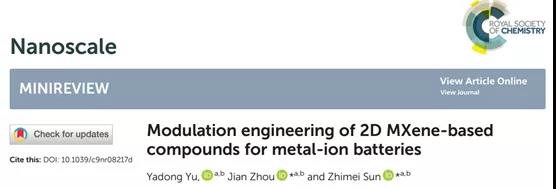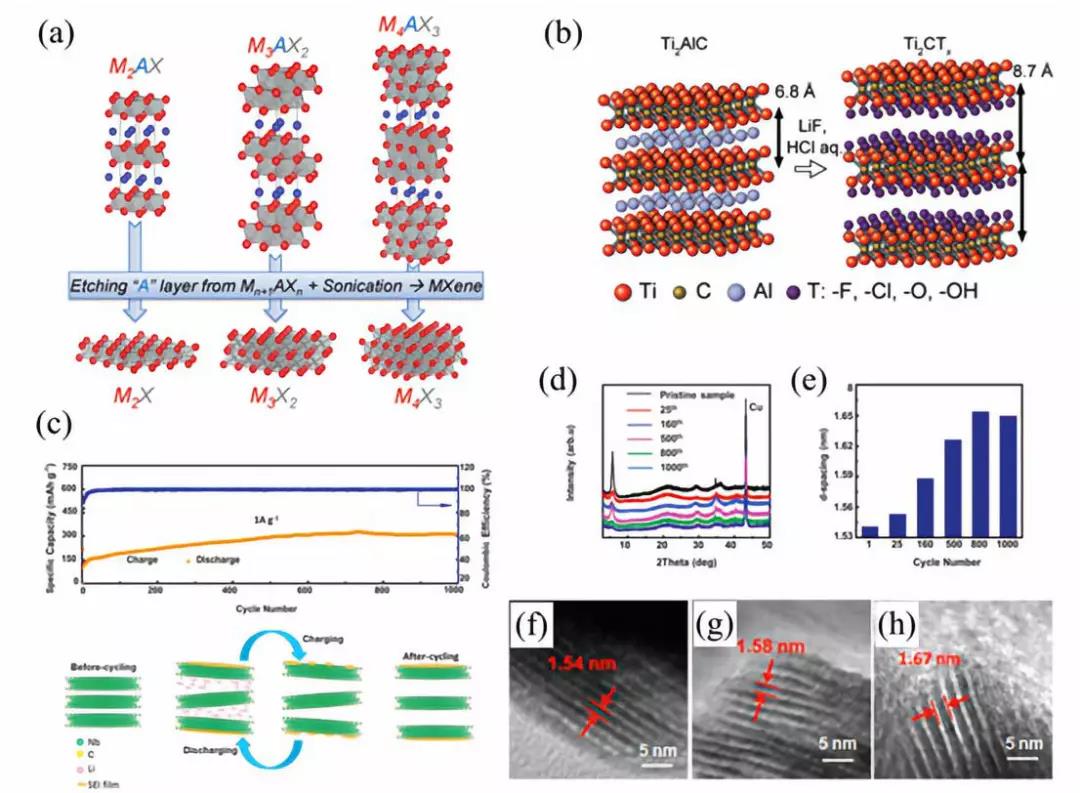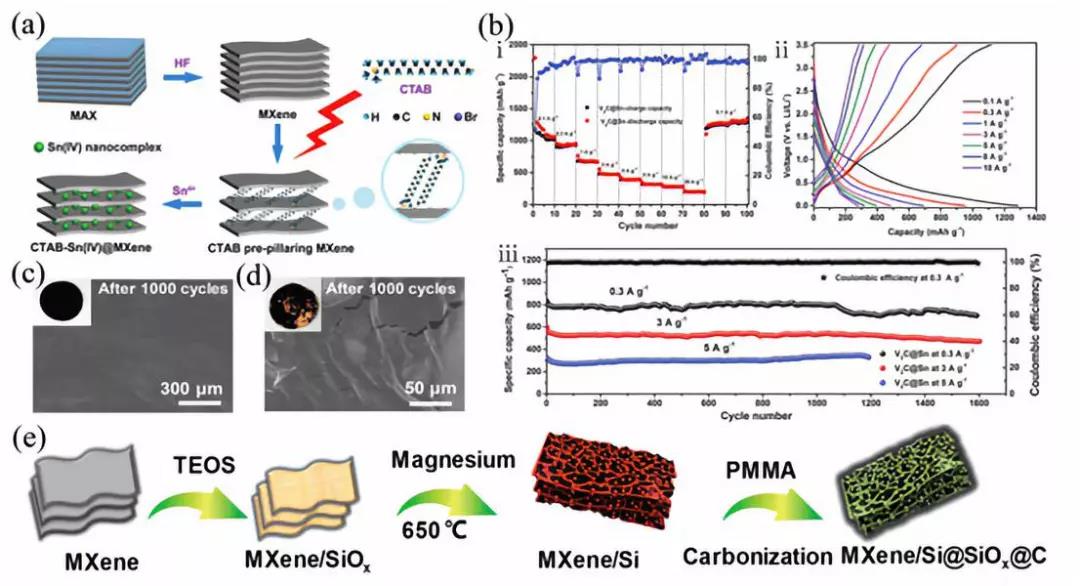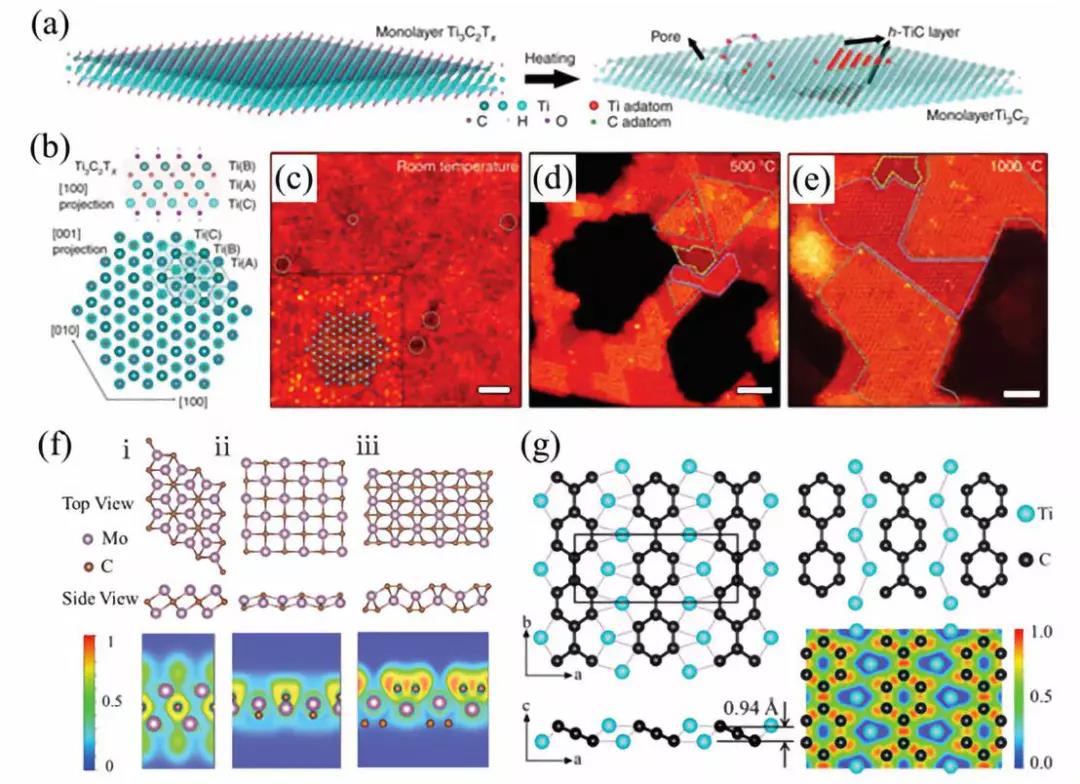
hotline:
17715390137
Tel/Wechat:
18101240246 (Technology)
0512-68565571
Email:mxenes@163.com (Sales Engineer)bkxc.bonnie@gmail.com
Scan the code to follow or search the official account on WeChat:
2D Materials Fronrier After paying attention,
click on the lower right corner to contact us,
Enter enterprise WeChat.
Professional Services Online


【Research Background】
The energy crisis and environmental pollution are driving the further development of renewable energy storage equipment. Lithium-ion batteries (LIB), as the most advanced energy storage technology, have become an essential part of modern electronic products. With the growing demand for energy storage devices, more emphasis on high energy density and safety, and low cost with sufficient reserves, traditional LIBs have reached their limits. Therefore, rechargeable metal ion batteries (MIB) using other abundant metal ions (such as Na +, K +, Mg2 +, Ca2 +, and Al3 +) have similar structures and working principles as LIB, and have shown broad applications in solving energy storage prospect. Two-dimensional (2D) transition metal carbides / nitrides (MXenes) show very competitive potential applications in electrodes due to their excellent electrical conductivity, chemical diversity and large specific surface area. However, the uncontrollable surface functionalization, the problem of restacking and collapse between layers have seriously hindered their practical application. For this reason, effective strategies are very needed to modify the traditional MXene to improve electrochemical performance.
[Achievement Profile]
Recently, Professor JianZhou and Professor Zhimei Sun of Beijing University of Aeronautics and Astronautics published a review article in the internationally renowned academic journal Nanoscale, titled Modulation engineering of 2D MXene-based compounds for metal-ion batteries. The article briefly summarized transition metals based on 2D MXene The latest constructive advances in the field of regulatory engineering of compounds. First, the traditional MXene is modified by embedding, surface modification, and constructing heterostructures. Secondly, by accurately controlling the atomic structure, proportion and composition of the constituent elements, a newer transition metal compound than MXene is designed. In addition, the future challenges and prospects of MXene-based materials are also introduced.
[Picture and text guide]

Figure 1. (a) Structure of MAX phase and corresponding MXene (b) Schematic of Ti2CTx synthesized from MAX phase treated with LiF / HCl (c) Long-cycle performance of Nb4C3Tx and structural change during charge / discharge cycle The XRD pattern before and after the Nb4C3Tx cycle (e) The interplanar spacing is a function of the number of cycles. HRTEM images of Nb4C3Tx after (f) 0, (g) 160 and (h) 1000 cycles

Table 1. Summary of electrochemical performance of MXene and MXene-based materials for MIB
 Figure 2. Schematic diagram of ion transport in (a) horizontally stacked and (b) vertically aligned Ti3C2TxMXene films.
Figure 2. Schematic diagram of ion transport in (a) horizontally stacked and (b) vertically aligned Ti3C2TxMXene films.

Figure 3. (a) Schematic diagram of preparing CTAB-Sn (IV) @ Ti3C2 (b) Electrochemical performance of Sn @ V2C: (i) rate performance; (ii) constant current charge and discharge curve; (iii) at different current densities Long-term cycling performance and Coulomb efficiency (c) MXene / Si @ SiOx @ C and (d) bare Si electrode (illustration: corresponding digital photo), 1000 cycles at 10C Preparation steps of C nanocomposite

Figure 4. (a) Schematic diagram of the preparation of MoS2 / MXene composite (b) XRD pattern (c) Schematic diagram of the preparation of MXene @ CN heterostructure (d) Schematic diagram of the preparation of PDDA-BP / Ti3C2 nanosheets, corresponding Cross-section SEM image (inset indicates flocs) (f) TEM image (inset indicates flexibility and independence of the film) and (g) HAADF-STEM and element mapping images (h) Charge / discharge of different electrodes and (i) Rate performance (j) Long-cycle performance of PDDA-BP / Ti3C2 heterostructure electrode (k) LED powered by two SIBs based on PDDA-BP / Ti3C2 electrode

Figure 5. (a) Schematic representation of a two-dimensional carbide crystal prepared by CVD. The inset shows the growth of α-Mo2C crystals (b) single-layer Mo2C (top) and 3nm-thick α-Mo2C crystals (bottom) (c) optical images of ultra-thin α-Mo2C crystals, scale 20μm (d) HRTEM shows The molybdenum atoms (white dots) are arranged in the hcp structure, and the C atom is located in the center of the six Mo atoms.

Figure 6. (a) Schematic diagram of h-TiC homoepitaxial growth formed by electron beam irradiation and heating. (B) Along (c) at room temperature, (d) at 500 ° C and (e) at 1000 ° C. [001] Area axis Atomic resolution STEM image and atomic resolution STEM image obtained from a single layer of Ti3C2Tx (f) Top and side views of (i) Mo2C, (ii) MoC and (iii) MoC2 and ELF in this part (g) TiC3 Single-layer structure, zigzag Ti atom chain and n-biphenyl structural unit and ELF diagram

Figure 7. (a) Atomic configuration of Mo2B2 during the stepwise interaction of HF through the edges of Mo2AlB2. (B) ADF-STEM image (located in the etching chamber) of a separated layered MoB sheet (left). Magnification and contrast-enhanced images (middle) and the structure of layered areas of MBene sheets (right). Adsorption and Diffusion Behavior of Li / Na on Two-Dimensional TiB (c) ELF Diagram of a TiB Monolayer with One Li / Na Atom
[Summary of this article]
This article briefly reviews the recent advances in research on modulation of MXene-based electrodes with enhanced performance in rechargeable MIBs. The traditional MXene was effectively modified by intercalation, surface modification or construction of heterostructures, and by accurately controlling the atomic structure, the proportion and composition of constituent elements, the transition metal carbide / nitride / Boride. Recent studies have shown that the above strategy is not only conducive to improving the structural stability and obtaining two-dimensional MXene-based materials with controllable surface, but also to obtain high-performance electrodes with sufficient metal ion capacity, safety, and excellent charge and discharge performance. This article is of great significance for the development of two-dimensional materials and renewable energy technologies.
Literature link:
DOI: 10.1039 / C9NR08217D

| Reminder: Beijing Beike New Material Technology Co., Ltd. supplies products only for scientific research, not for humans |
| All rights reserved © 2019 beijing beike new material Technology Co., Ltd 京ICP备16054715-2号 |